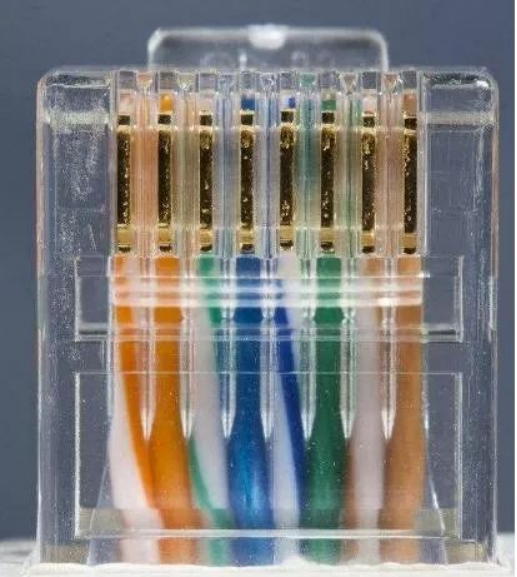What is the function of each wire in the 8-core wire of the network cable in video surveillance system?
When many friends connect the network cable, they usually don't know the eight copper wires in the network cable, which ones are the ones that ensure the normal transmission of the network? The first thing to know is the overall function of the eight copper wires. In order to reduce the mutual interference of electromagnetic signals, the eight copper wires are twisted together at a certain density. In this way, when transmitting electrical signals, the radio waves radiated from each other will cancel each other out, effectively eliminating interference. The name twisted pair is also derived from this structure.

The earliest application of twisted pair was used for the transmission of telephone signals, and then it was gradually introduced into the transmission of digital signals. Now, Category 5e twisted pair and Category 6 twisted pair are widely used. The maximum bandwidth can reach 1000Mbps. The only disadvantage of twisted pair is that the transmission distance is short, which can only reach 100 meters. Generally, Category 5 over Category 5 twisted-pair cables need to use four pairs of wires, that is, 8 core wires. Below 100M, generally use 1, 2, 3, 6, four wires. Main line (standard 568B): The line sequence at both ends is the same, and the line sequence is: orange-white, orange, green-white, blue, blue-white, green, brown-white, brown. Reverse line (568A): One end is the line sequence of the positive line, and the other end is: green-white, green, orange-white, blue, blue-white, orange, brown-white, brown. The first monitoring press: 568A line sequence is not necessary to memorize, one is no longer using this line sequence, and when the other one is used, just swap 13 and 26 on the basis of B.
Specifically, why use 1236 four wires, then you need to know what the function of each core is: 1 output data (+) 2 output data (-) 3 input data (+) 4 reserved for telephone use 5 reserved for telephone Use 6 to input data (-) 7 Reserved for telephone use 8 Reserved for telephone use It can be seen that although the twisted pair has 8 core wires, only 4 of them are actually used in the currently widely used 100M network. Roots, namely the 1st, 2nd, 3rd, and 6th, they play the role of receiving and sending signals respectively. 4, 5, 7, and 8 are two-way lines, reserved for use. However, when the network runs above 100M, usually all eight cores will be used. For example, not only 1 3 2 6 but also eight cores must be used for Category 6 and Category 6 cables, otherwise the network operation will be unstable. Stripping the network cable, we can find that the winding density of the four pairs of twisted pairs is not the same. The orange and green pairs used to transmit data have significantly more winding turns than the brown and blue pairs used for grounding and other public purposes, so it is recommended When you usually make jumpers, arrange them strictly in the order of 568B.

I often hear people say: "I like to make lines in the order I am used to, can it be used?" You can use this at home casually, but if you are in a project, you should be stricter and follow the line order. Otherwise, the role of the twisted pair will be lost. The data transmission attenuation is serious, and the transmission distance is greatly reduced. Here we want to emphasize that if you insist on arranging the wire sequence according to your own habits, you must put the two cores of 1 and 3 on a pair of twisted pairs, and the two cores of 2 and 6 on a pair of twisted pairs.
Established 17 years ago, Blue Icon (Tianjin) Technology Co. Ltd, a national high-tech company, specializes in design, engineering, manufacturing and sales of high-quality CCTV surveillance equipment including pan-tilt head/positioner, long rang laser PTZ camera, IR thermal imaging PTZ camera, dual-vision PTZ camera, camera housing enclosures, camera mounting brackets and accessories, and provide custom pan-tilt products to meet our customers' various system/project requirements. Made with durable material, our products are tested to withstand continuous operation in the most harsh condition. Our products have been widely used in over 40 countries across five continents.
Inquiry Contact:
Kevin Zhao
Skype: kevinzhao.zhb
Whatsapp/Wechat: +86-139-2068-8922
 English
English 日本語
日本語 한국어
한국어 français
français Deutsch
Deutsch Español
Español italiano
italiano русский
русский português
português العربية
العربية tiếng việt
tiếng việt ไทย
ไทย čeština
čeština dansk
dansk Svenska
Svenska



